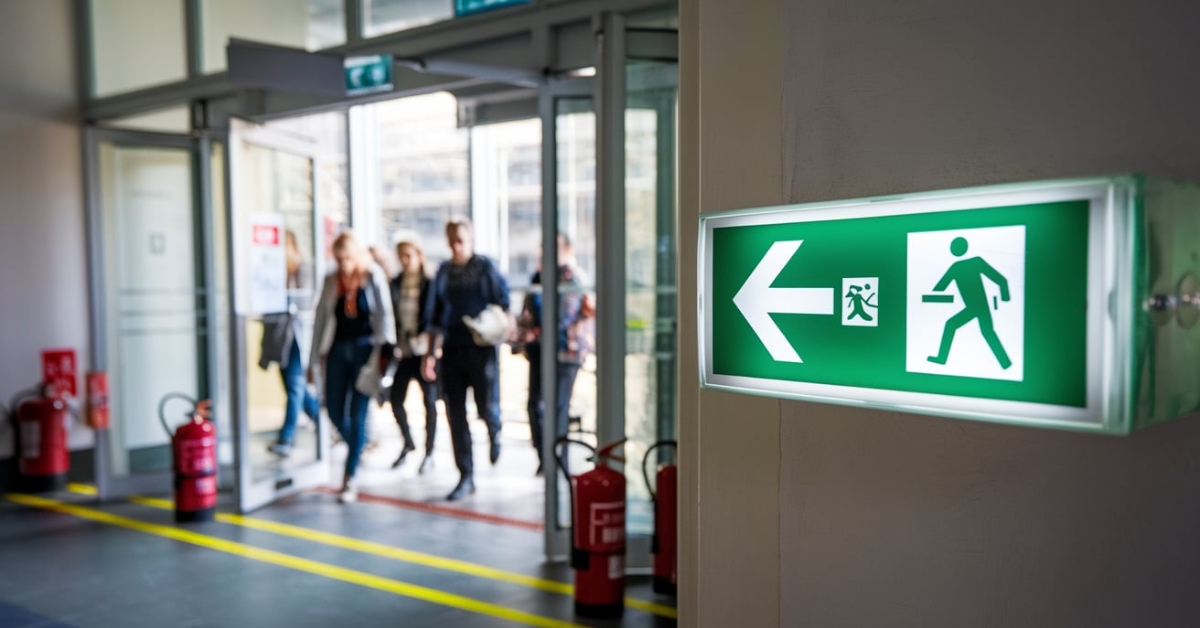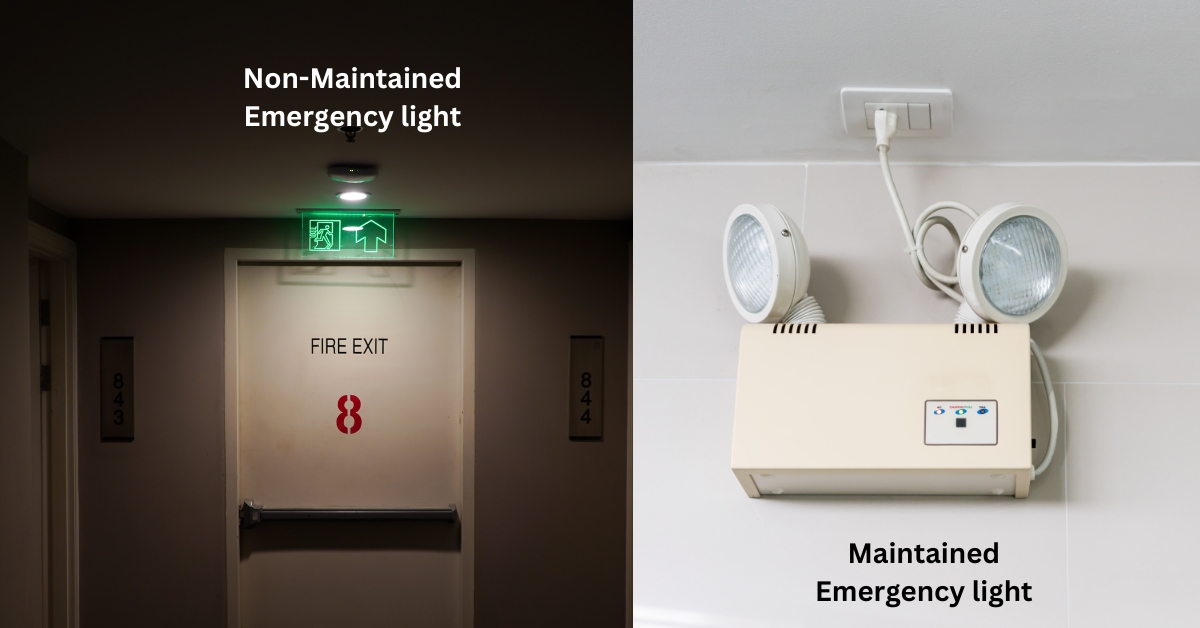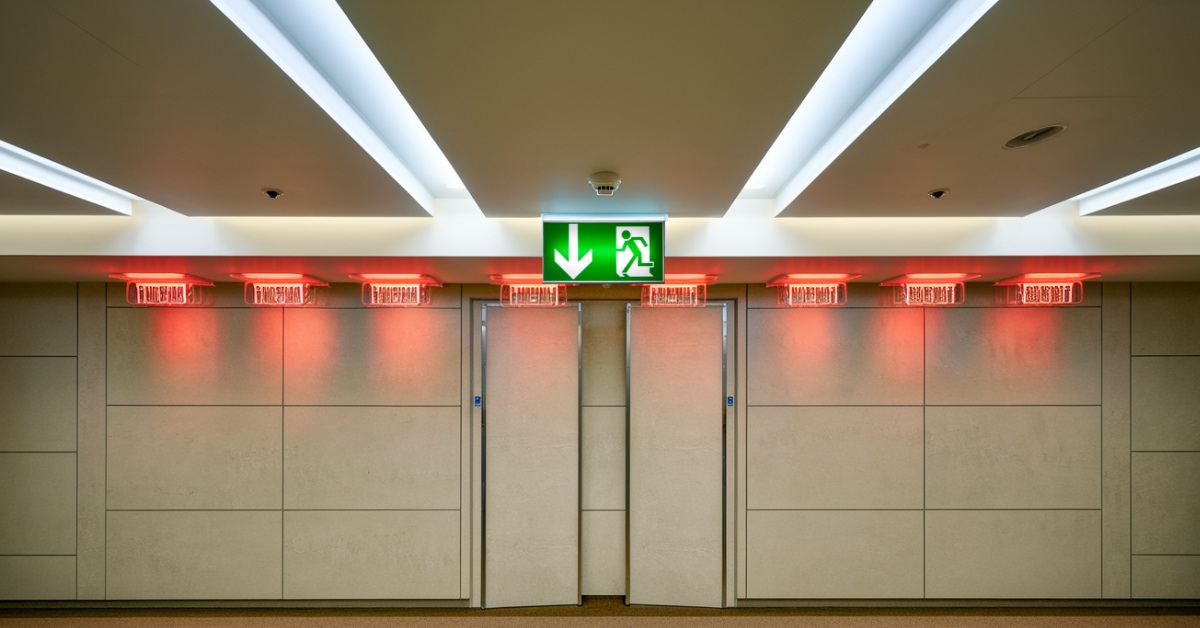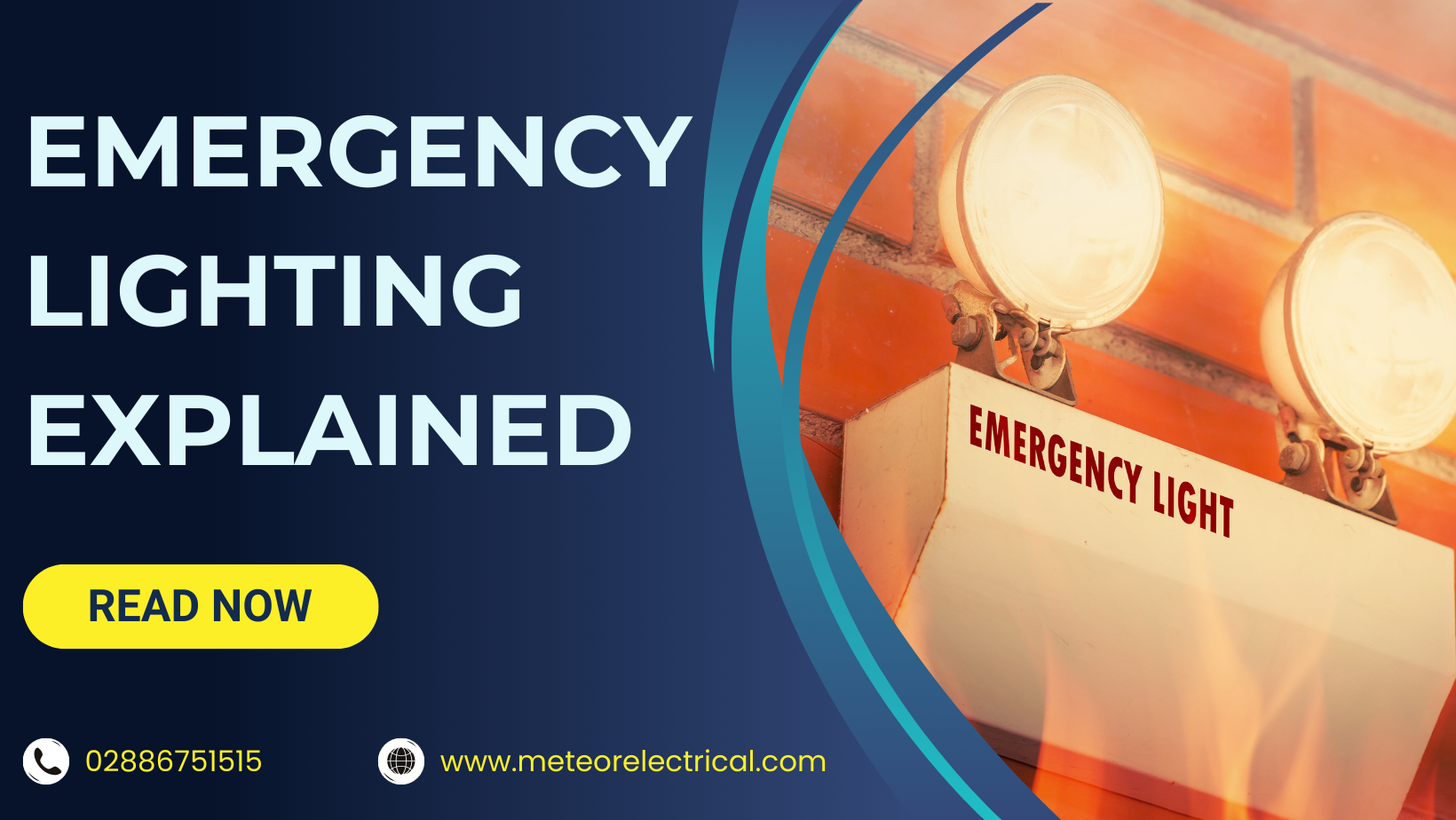Emergency Lighting Explained

Emergency lighting is a vital safety feature, providing a backup light source during emergencies such as fires or power outages. Statistics show that 60% of fires occur between 6 p.m. and 6 a.m., when visibility is low, making emergency lighting critical for safe evacuation. In most cases, a power failure results in total darkness, creating hazardous conditions for building occupants. Emergency lighting operates automatically, illuminating areas sufficiently to guide people to exits and ensure a safe evacuation.
Building and fire regulations across the UK and Ireland require public premises to be equipped with fully operational emergency lighting. Electricians must understand and comply with current building regulations and any additional requirements set by local authorities when installing emergency lighting. British and Irish Standards provide electricians and lighting designers with clear guidelines, ensuring installations meet the minimum safety standards. For some high-risk environments, even higher standards may be necessary.
Once the emergency lighting systems are installed and commissioned to meet these standards, it becomes the responsibility of the premises' owner to conduct a fully rated duration test each year. For assistance with lighting surveys or advice, feel free to contact our specialists at [email protected].
Credit: The HMO Platform
Types of Emergency Lighting

Emergency lighting can be categorised into several subtypes, each serving a specific function to ensure safety during a power outage. Let's break down the most common types:
| Type of Emergency Lighting | Description | Common Usage | Key Features |
|---|---|---|---|
| Escape Route Lighting | Illuminates exit paths to ensure safe evacuation. | Hallways, stairways, exit doors. | Ensures safe exit during emergencies. |
| Exterior Emergency Lighting | Provides lighting outside the building during power cuts. | External areas, building entrances. | IP65-rated for protection against water and dust. |
| High-Risk Task Area Lighting | Illuminates areas with dangerous equipment. | Factories, workshops. | Allows safe equipment shutdown and evacuation. |
| Maintained Lighting | Stays on continuously, even during normal conditions. | Cinemas, theatres, stairwells. | Switchable between maintained and non-maintained modes. |
| Non-Maintained Lighting | Only activates during a power failure. | Offices, factories. | Energy-efficient and only used in emergencies. |
Escape Route Emergency Lighting
Escape route emergency lighting is essential for illuminating exit routes, allowing occupants to evacuate swiftly and safely. In an emergency, such as a power cut caused by a fire, it’s crucial for people to know the quickest route out of the building. Picture a hallway filled with smoke—emergency exit signs featuring running man graphics immediately illuminate to guide people to safety. This type of lighting is crucial in key areas like:
- Exit doors
- Escape routes
- Stairways
- Toilets and windowless rooms
- Firefighting equipment and alarms
- Areas where equipment needs to be shut off during an emergency
- Changes in floor level
Exterior Emergency Lighting
For companies operating at night or during winter's long dark evenings, exterior emergency lighting is essential. Imagine a sudden power outage when it’s already dark outside—without proper external lighting, customers or visitors might be exposed to danger. Exterior emergency lighting not only keeps the outside of your premises visible but also helps prevent accidents.
It’s important that exterior lights are IP65-rated, ensuring they are protected from water and dust. For example, our 7 Watt LED IP65 Twin Spot Emergency Light provides optimal coverage with its adjustable heads, making it a popular choice for outdoor spaces.
High Risk Task Area Emergency Lighting
Certain high-risk areas require special emergency lighting to ensure workers can safely shut down equipment and exit the premises. Areas where dangerous machinery or materials are handled benefit from immediate lighting during an emergency to prevent accidents or injuries.
Maintained vs. Non-Maintained Emergency Lighting

When installing an emergency lighting system, choosing between maintained and non-maintained lighting is an important decision. Each has its advantages depending on the location and requirements of the building.
Non-Maintained Emergency Lighting
Non-maintained lighting only activates during a power failure, meaning it remains off during normal conditions. This is a popular choice for factories, offices, and areas with familiar escape routes. It’s also energy-efficient, helping building owners save on electricity costs.
One potential downside is that without regular testing, it’s difficult to know if the lights are functioning correctly until a power cut occurs. However, self-testing emergency lights are a great solution to this problem, ensuring the system is always in working order.
Maintained Emergency Lighting
Maintained emergency lighting stays on continuously, even during normal conditions. This is ideal for areas that are frequently in darkness, such as cinemas and theatres, where exit routes must remain illuminated.
Many maintained fittings offer a switchable option, allowing electricians to set them to non-maintained mode in areas that don’t require constant lighting, like stairwells. This flexibility makes them a cost-effective choice for premises with varying lighting needs.
Credit: Shina Li
Learn Here: All about Maintained or Non Maintained Emergency Lighting
Testing Emergency Lighting Systems

Regular testing is essential to ensure emergency lighting systems are functioning properly.
Monthly Test
A short functional test should be carried out every month in accordance with British and Irish standards. Known as the emergency key switch test, it checks that the lighting automatically switches on when power is cut off. All lights should be clearly visible, with no signs of damage.
Annual Test
Each year, a fully rated duration test should be performed. Emergency lighting systems must remain operational for at least three hours, ensuring adequate light during a prolonged power failure. Any faults discovered during this test must be repaired or replaced immediately.
Recording the results of both monthly and annual tests is a legal requirement. While trained staff can carry out basic testing, a qualified electrician should be called in for more complex systems or if there are concerns about the test results.
In the event of an emergency, well-maintained lighting systems can be the difference between a safe evacuation and a dangerous situation. At Meteor Electrical, we provide a full range of LED emergency lighting products to suit any building’s needs.
Conclusion: Why Choose Meteor Electrical for Emergency Lighting?
Whether you need guidance on designing an emergency lighting system or are looking to upgrade your existing setup, Meteor Electrical has you covered. Our selection of LED emergency lights, including exit signs, recessed lighting, and bulkhead lights, is designed for optimal performance and energy efficiency. LED technology not only provides superior brightness but also helps reduce energy costs, making it a smart investment for any business.
Don't wait until it’s too late—ensure your premises are fully equipped with reliable, energy-efficient emergency lighting today. For personalised advice, get in touch with one of our lighting experts at [email protected]. We’re here to help you create a safer environment for your employees, customers, and guests.
FAQs
1. What is emergency lighting?
Emergency lighting provides backup illumination in the event of a power failure, ensuring safe evacuation from a building.
2. What are the types of emergency lighting?
Common types include escape route lighting, high-risk task area lighting, and exterior emergency lighting.
3. How often should emergency lighting be tested?
Emergency lighting should be tested monthly for functionality and annually for a full-duration test to ensure proper operation.
4. What’s the difference between maintained and non-maintained emergency lighting?
Maintained lights stay on continuously, while non-maintained lights only activate during power failures.
5. Why choose Meteor Electrical for emergency lighting?
Meteor Electrical offers a wide range of energy-efficient LED emergency lighting solutions, backed by expert guidance and reliable performance.

